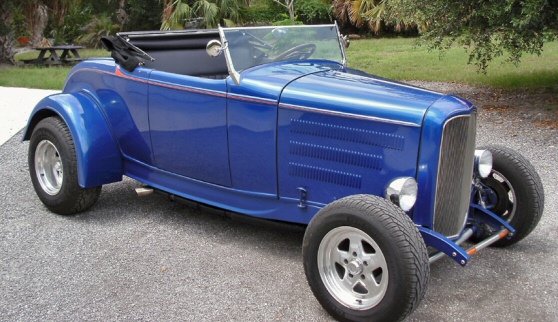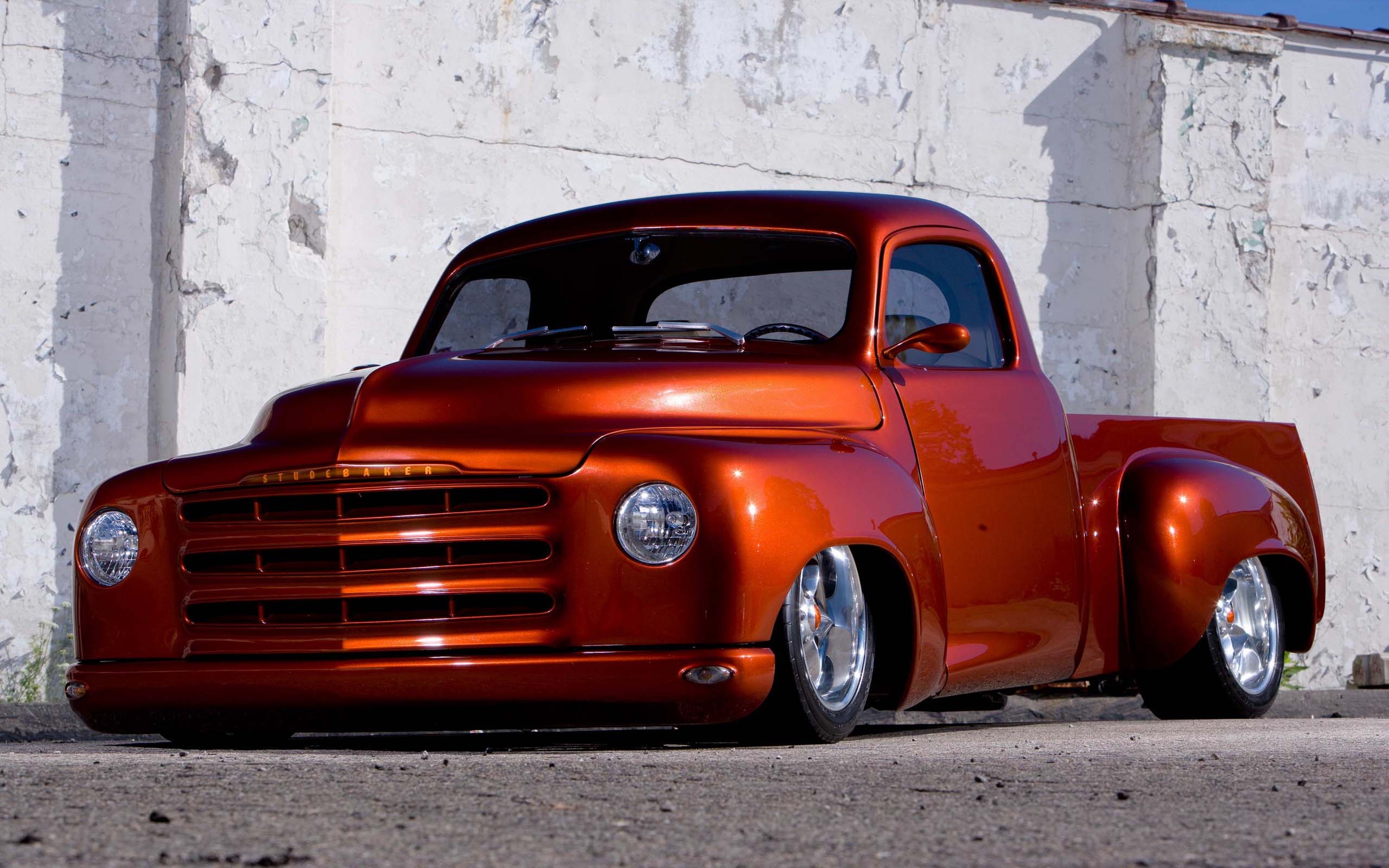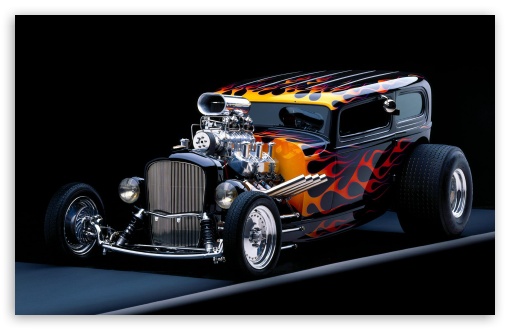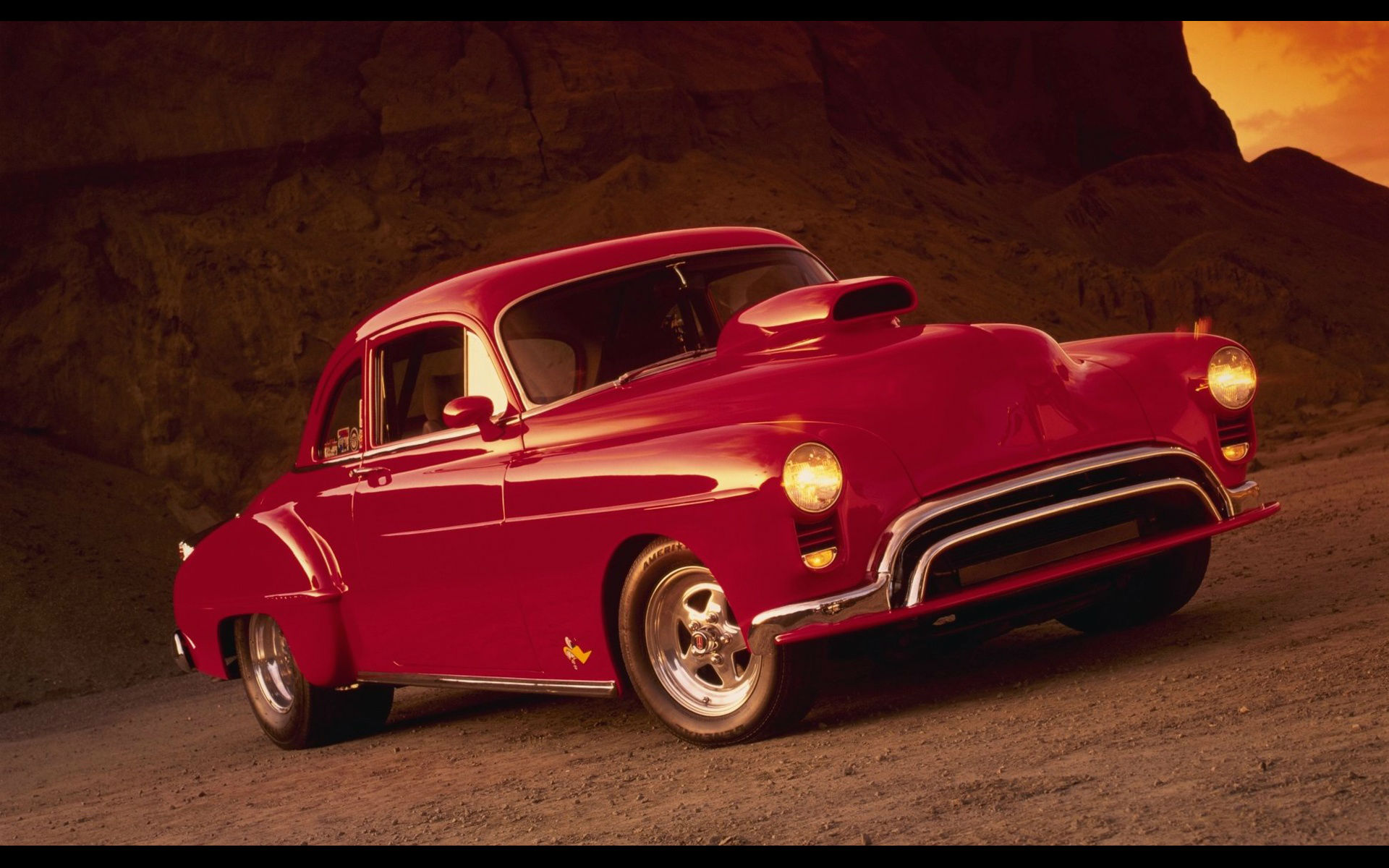Source(google.com.pk)
Hot Rods Wallpapers Hd Biography
The timeline for hot rods and custom cars starts before World War II. Teens itching to tinker with cars and go fast were racing cheap Ford Model Ts on Southern California's dry lakes and street racing in Los Angeles even in the 1920s. The Harper, Muroc, and El Mirage dry lakes -- all 50 or so miles north of Los Angeles -- saw racing activity from the '20s up to World War II. Racing at El Mirage continues today.
Hot Rods Image Gallery
Speed junkies could jump in their hopped-up, chopped-down Model Ts and be at one of the dry lakes in less than three hours. Or, if the need was urgent, they could find a deserted back road or open field. At the lakes, the cars were timed with handheld stopwatches and placed in a class determined by the resultant time.
The vast majority of the cars being run were four-cylinder Ford Model Ts or their successor, the four-cylinder Model A. The cars were cheap, plentiful, lightweight, and easy to work on. They responded to simple "hop ups" like higher compression, ignition and timing adjustments, additional carburetors, and more radical cam grinds.
The drill was fairly simple: Buy the nicest roadster you could find (because roadsters were the lightest); strip off everything not needed to go fast, like the fenders, headlights, hood, and top; find some cheap used tires to replace your bald ones or to mount over your existing tires for a little extra tread; and go racing.
On the next page, learn more about the first speed shops!
When Robert Genat cited a Motor Trend road test of the OHC-6–powered Pontiac Tempest in the Jan. ’66 issue (see our cover story “The Non GTO”), we went looking for that story to dig up some more info on this car and its advanced (for the time) powertrain. In the story, John Ethridge likened Pontiac’s six to the XK-series Jaguar engine, particularly its exhaust note. “It starts to make music much like that of the XK-120M, which reaches a crescendo around 2,800-3,000 rpm and continues until the redline. Happily unlike the Jag, however, you can orchestrate this one to around 6,500 rpm without fear of something coming unstrung, because of its modern, short-stroke design.”
Ethridge’s test car was a Tempest Sprint, equipped with the higher-output (207hp) version of the 230ci six. It was backed by a four-speed manual transmission and 3.90 gears. The Saginaw trans had a fairly wide gap between First (3.11) and Second (2.20) gears, which proved to be an issue; Pontiac asked him to keep the revs below 5,800 rpm because the engine in the car was brand-new.
Still, Ethridge was able to click off 0-60 times of 8.2 seconds and a quarter-mile in 16.7 at 82 mph. And he did it in some fairly nasty, wet weather, judging by the photos. “However, we have it on good authority that, by using fairly simple drag racer’s techniques, [these times] can be further improved upon,” he wrote. As examples, Ethridge wrote about a Tempest Sprint with drag slicks, 4.33 gears, and no air cleaner that ran the quarter in 16.2 at 86 mph, and another with 3.11 gears and butyl tires in place of the slicks that ran 15.8 at more than 90 mph. The good authority he’s referring to was probably the crew at Royal Pontiac, which often massaged cars for the press.
According to the spec box, Motor Trend’s test car had a base price of $2,507 but cost $3,139.19 due to the Sprint package ($126.72), four-speed gearbox ($184.31), ride and handling package ($16), rally wheels ($42.02), 7.75x14 blackwall tires ($14.74), AM/FM radio ($29.12), and other options.
Read more: http://www.hotrod.com/muscle_car_review/mscp_1206_ohc_6_powered_pontiac_tempest_muscle_car_rewind/#ixzz2GnoGObrW
Ethridge came away impressed with the Tempest Sprint, saying it would “outperform most cars, which is remarkable for any six-cylinder these days. Even among cars that can beat it, it’s hard to find one that gives more psychologically satisfying performance. Whether accelerating through the gears, negotiating curvy roads, or cruising down freeways, this car delivers the utmost sensation of speed and motion. Not speed itself, but the sensation of it, is really what the enthusiast seeks.”
Hmmm. We’d guess there were some GTO owners who took issue with that last bit.
Read more: http://www.hotrod.com/muscle_car_review/mscp_1206_ohc_6_powered_pontiac_tempest_muscle_car_rewind/#ixzz2GnoMiE3g
Bangers are bitchin’, and prehistoric bangers are better yet. There are many dedicated fans of the old-and-slow 201ci, L-head four-bangers originally found in millions of Ford Model Ts, and Model A/B/C-equipped ’28–’34 Fords—and especially of the speed equipment manufactured for them. The good news is they’re popular enough that you don’t need to sweat scouring endless swap-meet spaces to score a find—much of it is reproduced and better than new. Bangers are now hotter than ever.
There was a time when the whole of hot rodding was based on making old Model Ts and later Model As run as fast or faster than anything in Anytown, USA. For the few who could afford it, a reground cam, improved ignition, and an overhead conversion could make a stripped-down roadster dance to the tune of 115 mph on the dry lakes. Bangers were the hardware to beat, even into the Ford flathead V8 era until about 1938, when hot rodders were able to apply their talents to four more cylinders—and the rest is hot rod history. Their depression-era cost and obsolescence after WWII make them a genuine score today.
For those eager to learn more, there’s the Secrets of Speed Society (SecretsOfSpeed.com), which publishes a quarterly journal with lots of tech and also holds meets throughout the year, where you can see and hear first-hand what the commotion is all about for a modest yearly membership.
If you’re ever near Lincoln, Nebraska, Speedy Bill’s Museum of American Speed (MuseumOfAmericanSpeed.com) is a treasure trove of virtually every speed part ever made, including super-rare and one-off banger hardware, plus long forgotten overhead conversions like Cook, Fargo, and Rutherford.
Once your roadster is running and you’re ready for something more than “motorvating,” the Southern California Timing Association (SCTA) has classes for racing both vintage flathead fours (VF4) and vintage overhead four-bangers (V4)—with Bonneville records of 152.1 mph in Gas Roadster and 169.3 mph in the Fuel Roadster class! Yes, you really can caffeinate half-an-eight.
Our friends at H&H Flatheads (Flatheads-Forever.com) in La Crescenta, California, have been collecting and assembling hot bangers for years and were kind enough to let us photograph these coveted gems. Check out what vintage speed looks like.
Read more: http://www.hotrod.com/thehistoryof/retrospective/hrdp_1210_vintage_ford_model_a_b_c_four_cylinder_engines/#ixzz2GnoVLsm9
Miller-Schofield Conversions:The Miller-Schofield overhead conversion was designed by Leo Goosen for race-car builder extraordinaire Harry Miller and was funded by a consortium of businessmen led by George L. Schofield. Their plan was to capitalize on the presumed long run of Model As spewing out of Ford’s plants. Model As were produced from 1928 to 1931. With Miller’s collapsing fortunes, the Miller Hi Speed head tooling was soon sold to Cragar and slightly reworked as a Cragar head sold through Bell Auto Parts. (Yes, Cragar S/S wheels are the offspring of this long-ago race-parts manufacturer.) Among many racing triumphs, the team of Miller and Goosen were best known for developing the Offy engine that dominated Indy for decades.
Read more: http://www.hotrod.com/thehistoryof/retrospective/hrdp_1210_vintage_ford_model_a_b_c_four_cylinder_engines/#ixzz2Gnog07Nk










Hot Rods Wallpapers Hd Biography
The timeline for hot rods and custom cars starts before World War II. Teens itching to tinker with cars and go fast were racing cheap Ford Model Ts on Southern California's dry lakes and street racing in Los Angeles even in the 1920s. The Harper, Muroc, and El Mirage dry lakes -- all 50 or so miles north of Los Angeles -- saw racing activity from the '20s up to World War II. Racing at El Mirage continues today.
Hot Rods Image Gallery
Speed junkies could jump in their hopped-up, chopped-down Model Ts and be at one of the dry lakes in less than three hours. Or, if the need was urgent, they could find a deserted back road or open field. At the lakes, the cars were timed with handheld stopwatches and placed in a class determined by the resultant time.
The vast majority of the cars being run were four-cylinder Ford Model Ts or their successor, the four-cylinder Model A. The cars were cheap, plentiful, lightweight, and easy to work on. They responded to simple "hop ups" like higher compression, ignition and timing adjustments, additional carburetors, and more radical cam grinds.
The drill was fairly simple: Buy the nicest roadster you could find (because roadsters were the lightest); strip off everything not needed to go fast, like the fenders, headlights, hood, and top; find some cheap used tires to replace your bald ones or to mount over your existing tires for a little extra tread; and go racing.
On the next page, learn more about the first speed shops!
When Robert Genat cited a Motor Trend road test of the OHC-6–powered Pontiac Tempest in the Jan. ’66 issue (see our cover story “The Non GTO”), we went looking for that story to dig up some more info on this car and its advanced (for the time) powertrain. In the story, John Ethridge likened Pontiac’s six to the XK-series Jaguar engine, particularly its exhaust note. “It starts to make music much like that of the XK-120M, which reaches a crescendo around 2,800-3,000 rpm and continues until the redline. Happily unlike the Jag, however, you can orchestrate this one to around 6,500 rpm without fear of something coming unstrung, because of its modern, short-stroke design.”
Ethridge’s test car was a Tempest Sprint, equipped with the higher-output (207hp) version of the 230ci six. It was backed by a four-speed manual transmission and 3.90 gears. The Saginaw trans had a fairly wide gap between First (3.11) and Second (2.20) gears, which proved to be an issue; Pontiac asked him to keep the revs below 5,800 rpm because the engine in the car was brand-new.
Still, Ethridge was able to click off 0-60 times of 8.2 seconds and a quarter-mile in 16.7 at 82 mph. And he did it in some fairly nasty, wet weather, judging by the photos. “However, we have it on good authority that, by using fairly simple drag racer’s techniques, [these times] can be further improved upon,” he wrote. As examples, Ethridge wrote about a Tempest Sprint with drag slicks, 4.33 gears, and no air cleaner that ran the quarter in 16.2 at 86 mph, and another with 3.11 gears and butyl tires in place of the slicks that ran 15.8 at more than 90 mph. The good authority he’s referring to was probably the crew at Royal Pontiac, which often massaged cars for the press.
According to the spec box, Motor Trend’s test car had a base price of $2,507 but cost $3,139.19 due to the Sprint package ($126.72), four-speed gearbox ($184.31), ride and handling package ($16), rally wheels ($42.02), 7.75x14 blackwall tires ($14.74), AM/FM radio ($29.12), and other options.
Read more: http://www.hotrod.com/muscle_car_review/mscp_1206_ohc_6_powered_pontiac_tempest_muscle_car_rewind/#ixzz2GnoGObrW
Ethridge came away impressed with the Tempest Sprint, saying it would “outperform most cars, which is remarkable for any six-cylinder these days. Even among cars that can beat it, it’s hard to find one that gives more psychologically satisfying performance. Whether accelerating through the gears, negotiating curvy roads, or cruising down freeways, this car delivers the utmost sensation of speed and motion. Not speed itself, but the sensation of it, is really what the enthusiast seeks.”
Hmmm. We’d guess there were some GTO owners who took issue with that last bit.
Read more: http://www.hotrod.com/muscle_car_review/mscp_1206_ohc_6_powered_pontiac_tempest_muscle_car_rewind/#ixzz2GnoMiE3g
Bangers are bitchin’, and prehistoric bangers are better yet. There are many dedicated fans of the old-and-slow 201ci, L-head four-bangers originally found in millions of Ford Model Ts, and Model A/B/C-equipped ’28–’34 Fords—and especially of the speed equipment manufactured for them. The good news is they’re popular enough that you don’t need to sweat scouring endless swap-meet spaces to score a find—much of it is reproduced and better than new. Bangers are now hotter than ever.
There was a time when the whole of hot rodding was based on making old Model Ts and later Model As run as fast or faster than anything in Anytown, USA. For the few who could afford it, a reground cam, improved ignition, and an overhead conversion could make a stripped-down roadster dance to the tune of 115 mph on the dry lakes. Bangers were the hardware to beat, even into the Ford flathead V8 era until about 1938, when hot rodders were able to apply their talents to four more cylinders—and the rest is hot rod history. Their depression-era cost and obsolescence after WWII make them a genuine score today.
For those eager to learn more, there’s the Secrets of Speed Society (SecretsOfSpeed.com), which publishes a quarterly journal with lots of tech and also holds meets throughout the year, where you can see and hear first-hand what the commotion is all about for a modest yearly membership.
If you’re ever near Lincoln, Nebraska, Speedy Bill’s Museum of American Speed (MuseumOfAmericanSpeed.com) is a treasure trove of virtually every speed part ever made, including super-rare and one-off banger hardware, plus long forgotten overhead conversions like Cook, Fargo, and Rutherford.
Once your roadster is running and you’re ready for something more than “motorvating,” the Southern California Timing Association (SCTA) has classes for racing both vintage flathead fours (VF4) and vintage overhead four-bangers (V4)—with Bonneville records of 152.1 mph in Gas Roadster and 169.3 mph in the Fuel Roadster class! Yes, you really can caffeinate half-an-eight.
Our friends at H&H Flatheads (Flatheads-Forever.com) in La Crescenta, California, have been collecting and assembling hot bangers for years and were kind enough to let us photograph these coveted gems. Check out what vintage speed looks like.
Read more: http://www.hotrod.com/thehistoryof/retrospective/hrdp_1210_vintage_ford_model_a_b_c_four_cylinder_engines/#ixzz2GnoVLsm9
Miller-Schofield Conversions:The Miller-Schofield overhead conversion was designed by Leo Goosen for race-car builder extraordinaire Harry Miller and was funded by a consortium of businessmen led by George L. Schofield. Their plan was to capitalize on the presumed long run of Model As spewing out of Ford’s plants. Model As were produced from 1928 to 1931. With Miller’s collapsing fortunes, the Miller Hi Speed head tooling was soon sold to Cragar and slightly reworked as a Cragar head sold through Bell Auto Parts. (Yes, Cragar S/S wheels are the offspring of this long-ago race-parts manufacturer.) Among many racing triumphs, the team of Miller and Goosen were best known for developing the Offy engine that dominated Indy for decades.
Read more: http://www.hotrod.com/thehistoryof/retrospective/hrdp_1210_vintage_ford_model_a_b_c_four_cylinder_engines/#ixzz2Gnog07Nk
Hot Rods Wallpapers Hd

Hot Rods Wallpapers Hd

Hot Rods Wallpapers Hd

Hot Rods Wallpapers Hd

Hot Rods Wallpapers Hd

Hot Rods Wallpapers Hd

Hot Rods Wallpapers Hd

Hot Rods Wallpapers Hd

Hot Rods Wallpapers Hd

Hot Rods Wallpapers Hd

Hot Rods Wallpapers Hd
No comments:
Post a Comment